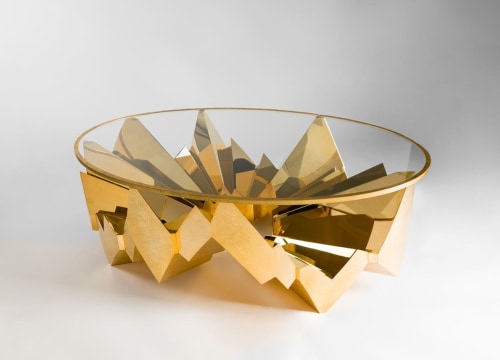

Juan and Paloma Garrido have had an instinctive attraction to silver since childhood. In 1982, after finishing high school, the siblings began to experiment and work in the family workshop under the supervision of their father, master silversmith Damián Garrido (1931-2002). It was Damián who first taught them to appreciate the meticulous and demanding nature of fine silver-making.
This intimate entrée to the craft was supplemented by intensive study—Juan took classes at the School of Art and Antiques, and he and his sister both took a variety of courses centered in Madrid and focused on the history and practice of traditional Spanish silversmithing. These studies deepened the siblings’ understanding of the craft’s history and evolution over time.
While they have carried on the work of their legendary father, frequently reproducing his many masterpieces, Juan and Paloma have also gained wide recognition for their own, fresh, and unique creations. While these creations bear Damián’s distinct influence, and are made with both his keen attention to detail and his measured approach, they are also distinctive and fresh—inspired, as they are, by architectonic and geometric elements.
The pair achieved their first great success when, in 1994, they participated in an international exhibition organized by the European Academy of Science and Art. Their submission, one of their very first designs in silver, entitled Damián Garrido, garnered considerable praise.
In 1997 Garrido debuted an exposition at the National Museum of Decorative Arts of Madrid, which traveled to a number of museums, including the National Museum of Contemporary Engraving in Marbella. The pair held a second dedicated exposition at the National Museum of Decorative Arts of Madrid in 2003.
In their most recent work Juan and Paloma have created compositions of lines, curved and straight, that transform the surface of their pieces as much as the pieces’ interiors and edges. The apparent regularity of precise geometry is reinvented and aggrandized with an asymmetry that supports a multiplicity of perspectives; and it is for this reason that to see any one piece from merely one vantage is to miss the richness of form with which the work is endowed.
This new work is of fewer aesthetic, conceptual, and formal restrictions; in short, it is focused on a balance of shapes. Size has ceased to be an obstacle for the siblings—they explore space and proportion with absolute liberty; and, the while, have never abandoned traditional craftsmanship. Contrary to the current trends in design—to apply ever more industrial techniques in the creative process—Juan and Paloma employ the manual methods used for centuries in the creation of beautiful silver objects. This stringent adherence to craftsmanship has served them well, especially in their foray into sculptural furniture, and has allowed them to create utility without relinquishing the eternal beauty of exquisite finishes and basic geometric forms.
The pair has created work for a number of prestigious luxury firms, such as Asprey of London, and worked for a variety of dignified institutions, such as the Spanish royal palace. Their work has been acquired by, among others, the National Museum of Decorative Arts of Madrid, the National Museum of contemporary Engraving in Marbella, and the Museum of Arts and Design (New York).